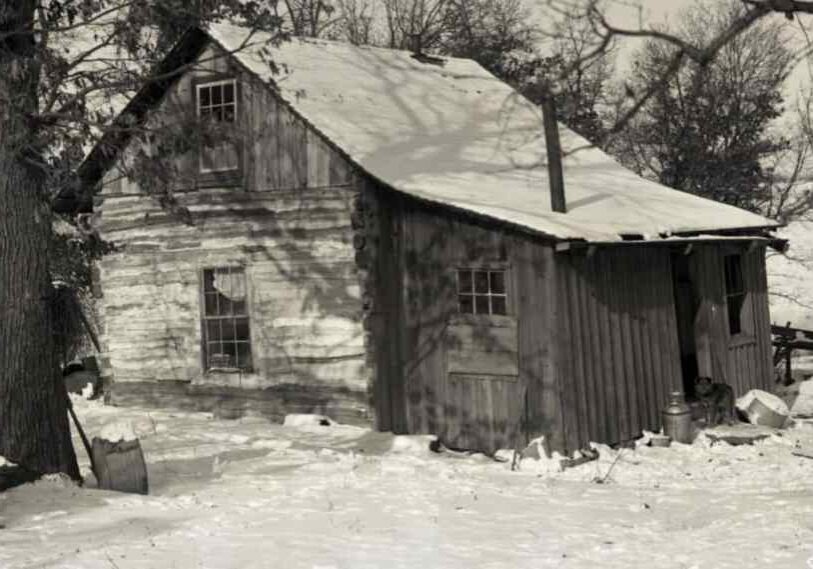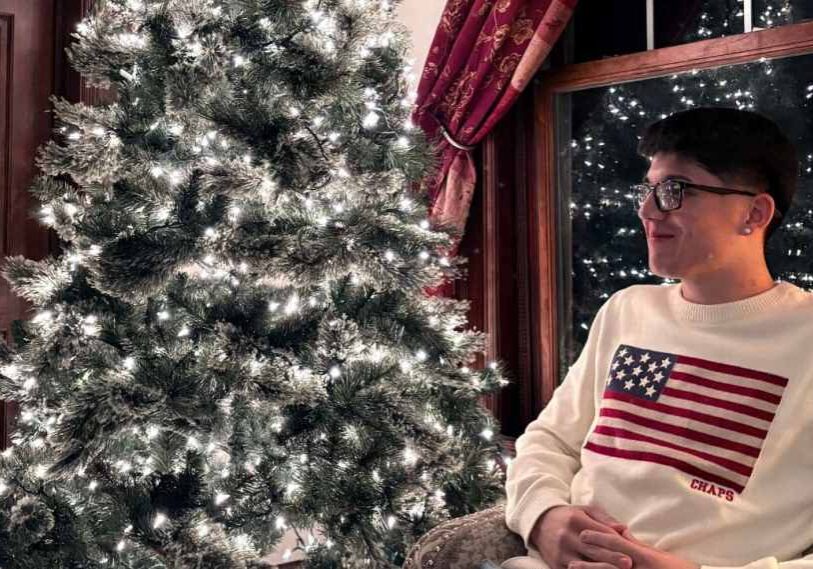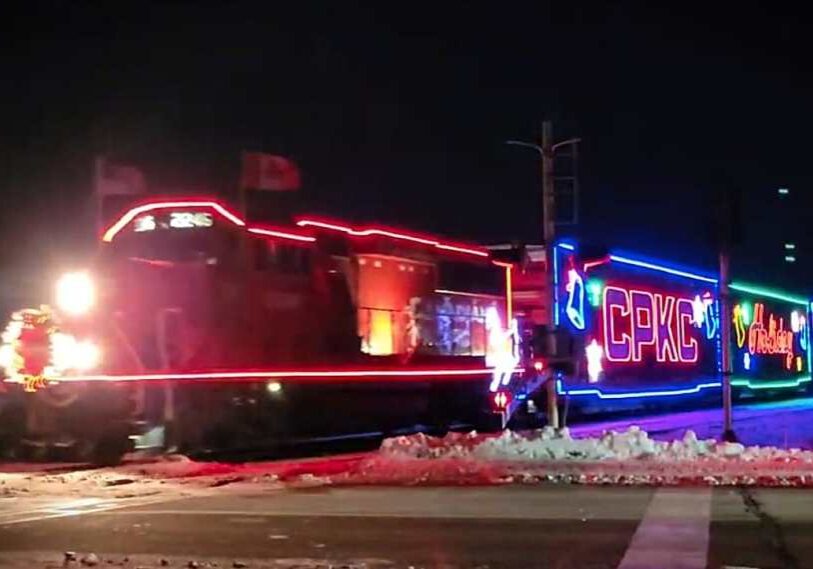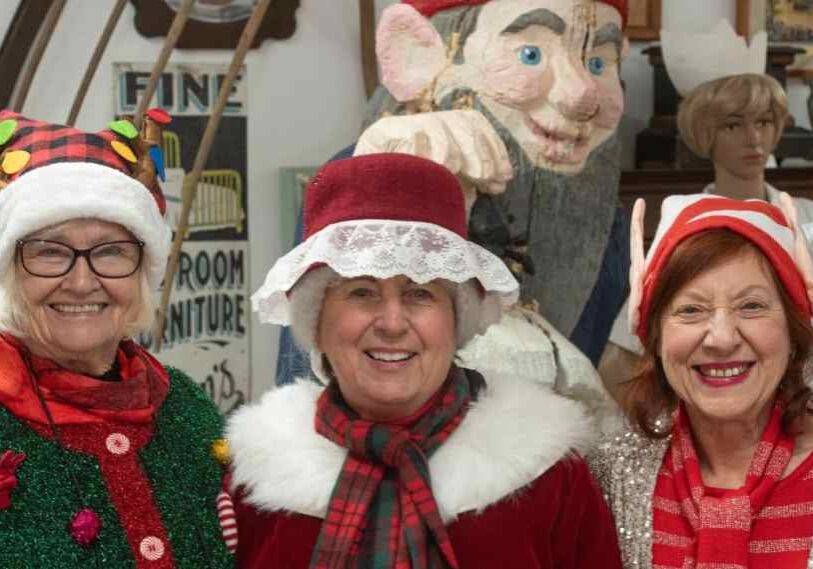An Artisan and the Apprentice

HOUSTON — Mary and Peter Denzer moved to rural Houston, Minnesota in 1993, crossing seven bridges to get to the property they bought along Chisholm Road.
And while culverts to handle modern farm equipment have since replaced the bridges, the number seven seemed a lucky omen. Enough so that they later named their pottery studio Seven Bridges Pottery. It has a fateful ring to it, as does Mary’s journey from art student to an experienced studio artist.
Mary Alexandra Milton grew up in St. Paul where she attended a college prep school, eventually studying art at Columbia University in New York City.
When an art professor asked her, “What do you want to do with your life?” she replied, “I want to be an artist.”
“Don’t waste your time in school, go to Florence, Italy,” he responded. And so the 22-year old student moved to Italy.
Delia Bell met Mary Denzer for the first time when she was 11, a few years after her family moved from Pittsburgh to Lanesboro. The daughter of two metal artists, she took a pottery class her last year in school and knew that this was a medium that she wanted to continue to explore.
This led Delia to becoming Mary’s apprentice in 2019. The two meet three days a week, throwing pots, exploring glazes that they mix themselves, firing in the kiln, and learning from each other.

Delia Bell at work in the studio. She began apprenticing with Mary Denzer in 2019.
An artisan and a 22-year-old apprentice. There is no timetable for how long this working relationship will last, no contract written and signed, no set of expectations.
They enjoy working together, seeing where their pottery takes them and sharing the journey along the way.
“It’s amazing working with Mary,” Delia said. “Her knowledge and experience is so valuable. She encourages my creativity.”
And what does Mary learn from Delia? “Patience, Mary said. “To be able to focus more clearly and see things through Delia’s eyes. We learn from each other.”
Ponte Vecchio, Florence, Italy
Mary’s journey begins in 1964, when she and a girl friend traveled through Europe, staying with friends in London and traveling in a VW bug through Belgium, Spain and France. They made their way to southern France befriending two Australian travelers along the way.
Mary’s girl friend soon went home to get married and one of the Ausie’s left for London. Mary and Bob, the remaining Australian, traveled by train to Florence.
Mary soon began studying sculpture at the Florence Academy of Fine Arts, the only woman in the class; Bob unfortunately needed medical attention on his foot.
Mary met a local resident on the Ponte Vecchio (an ancient stone arch bridge spanning the Arno River) who spoke English. He turned out to be Peter Denzer, an American artist who was living in Florence. He was able to call a friend who was a doctor and get Bob checked into the hospital.
Peter helped Mary, who was living in a pensione nearby, navigate the Italian bureaucracy, taught her what buses to take to visit Bob at the hospital, and befriended her as a neighbor. Bob eventually left for London.
By then Peter had published three novels, worked for a wire service as a journalist in Washington D.C. and, in 1945, with his fluent German, served as a political advisor to Ambassador Robert Murphy at Supreme Headquarters Allied Expeditionary Forces. Peter was one of the first journalists to enter Dachau concentration camp. He moved to Florence in 1960, working on a fourth novel while developing an interest in sculpture, carving in stone and modeling in clay.
Peter, whom the Italian neighbors called Professore, invited Mary to share his studio where each worked on their own projects. They were not your normal ex-pats, choosing to blend into the neighborhood and the Santa Croce community.

Mary Denzer throwing a pot on the wheel. Mary specializes in “everyday” utilitarian pottery that is used over and over again, rather than art that is solely displayed.
When flooding devastated Florence on November 4, 1966, Mary and Peter set up a first aid center on the second floor of their apartment building, administering first aid, organizing relief efforts and helping get needed supplies to those neighbors who needed them. The center became affiliated with the Knights of Malta. The Italian government gave them $800 to replace their art tools and supplies that were lost under 18 feet of water in their studio.
In 1968 they were married in the Palazza Vecchio, continuing with their art while doing a variety of jobs to support themselves.
“We did whatever we could to support ourselves, “said Mary, the couple vowing not to take any work that Italians could do. “Peter, who could read and speak Italian, worked translating guide books for a publishing house across the street and I taught English to Florentine children. We also gave art tours of Tuscany to Americans studying in Italy.”
In 1969, they returned to America on a Yugoslavian freighter with all of their worldly possessions. They lived firstly in New York City, where they both worked in publishing, before moving in 1970 to St. Paul, where Mary’s family was living.
Front Porch Pottery
While in St. Paul, Mary apprenticed to the potter R. Broderson focusing on making functional pottery, made famous by artist Bernard Leach of Cornwall, England and American Warren MacKenzie.
These two artists were influenced by Japanese and Korean potters and preferred a simple, utilitarian and functional approach to their art. They made by hand “everyday” pottery — affordable cups and plates that are handled and used over and over again — rather than fine art pieces that sit on a shelf or hang on a wall.
Peter soon learned how to throw pots and glaze. In 1974, they got a Small Business Administration loan and set up a retail and pottery outlet, with a studio in the back, called Front Porch Pottery on Grand avenue in St Paul. It was a high traffic area going through gentrification and the business prospered.
Working seven days a week, they were able to pay off their loan in 12 years. It was during this period that Mary and Peter spent six weeks traveling in Japan visiting potteries.
In the late 1980s, Peter and Mary started looking for land in Southeast Minnesota. They bought a house in 1988 and moved there full time when they sold their Front Porch Pottery business in 1993.

An example of Mary Denzer’s craft: (left) Hand carved Italian vase, white stoneware, cobalt blue terra sigillata; (right) Hand carved Italian plate, white stoneware, cobalt blue terra sigillata. All of the glazes Mary uses are mixed by hand.
Unschooling
Delia Bell left school in the ninth grade choosing to, what she called, “be unschooled.”
The “Unschooling Movement”, a hybrid method of Home Schooling, promotes curriculum-free learning where the student initiates exploratory activities themselves. It may or may not involve taking formal or informal classes — in person or via the Internet.
“My parents were kind of concerned, but allowed me to be home schooled. But I set up my own schedule and chose to study the topics that interested me,” Delia recalled. “I was soon taking advanced classes at Rochester Community and Technical College (RCTC), and ended up completing 30 credits.”
Delia took art classes, including painting and drawing, and by chance enrolled in a pottery class. And like the professor at Columbia who encouraged Mary to forego college and learn art in Florence, Robert Banker, an instructor at RCTC, told her that if she really wanted to study pottery she should try to apprentice under an experienced potter.
“I told him that I knew a potter in Houston, Minnesota that I might be able to study under.” At 22, Delia is the same age Mary was when she left Columbia for Europe.
Delia’s journey is specific to her craft, developing a style of pottery that she finds both aesthetically pleasing and functional for everyday use. Each step of the creation process – from working with clay, to glazing, to firing pieces in the kiln – requires attention to detail and developing technique.
Delia recently received a grant from the Southeastern Minnesota Art Council (SEMAC) to explore ceramic slab vessels, sculptural pieces that serve as functional pieces.
“I am really interested in the rectilinear form and looking forward to developing that skill,” Delia said. “I am very happy working in pottery, but I am not sure where it will take me. Some day I hope to have my own studio.”

An example of Delia Bell’s craft: (left) Hand carved grackle plate, white stoneware, black terra sigillata; (right) Hand carved slab vase, stoneware, Mollow blue/green & tenmoku glaze. Delia received a grant to explore rectilinear form working with ceramic slab vessels.
One of the things Delia has learned from Mary is the discipline required to be a good potter.
“There are ritual practices that you have to follow each day, almost a Zen process, a basic routine with each step requiring your full attention: weigh out the clay, trim the clay, sculpt the piece, prepare the glaze, ready the kiln,” Delia said. “Each step has its own techniques and requirements.”
In June 2023, Mary and Delia hosted Meadowfest at Seven Bridges Pottery, an annual event where a variety of local artisans sell their art wares. They also participated in the annual Bluff Country Art Tour.
Mary’s house is full of artifacts of her and Peter’s life, from Florence to St. Paul to Houston. Pictures of the Ponte Vecchio, the floods of ’66, the fellow artisans they met along their journey. Sculptures that Peter made and lamps with wonderful hues of glazing. Maps of Florence remind her of time and place and the memories are easy to recall, the details close by as if they happened yesterday.
Peter died in 2012. Mary (with Delia’s help) is working on a book of Peter’s poetry that will be published by Shipwreckt Books Publishing Company of Winona in early 2024 called ChiaroScuro (LightDark).
You can follow Seven Bridges Pottery on Facebook; follow Delia Bell on Instagram: @deliabell — and experience Delia’s creativity as a budding poet in this Root River Current post.






